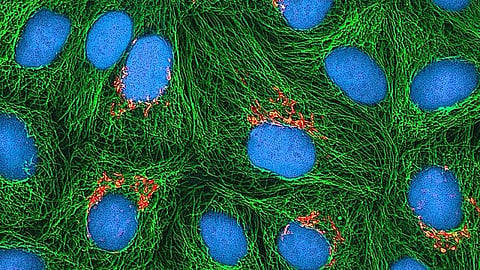SOURCES:
1. Zhou P, Yang XL, Wang XG, Hu B, Zhang L, Zhang W, Si HR, Zhu Y, Li B, Huang CL, Chen HD, Chen J, Luo Y, Guo H, Jiang RD, Liu MQ, Chen Y, Shen XR, Wang X, Zheng XS, Zhao K, Chen QJ, Deng F, Liu LL, Yan B, Zhan FX, Wang YY, Xiao GF, Shi ZL. A pneumonia outbreak associated with a new coronavirus of probable bat origin. Nature. 2020 Mar;579(7798):270-273. doi: 10.1038/s41586-020-2012-7. Epub 2020 Feb 3. Erratum in: Nature. 2020 Dec;588(7836):E6. PMID: 32015507; PMCID: PMC7095418.
2. Hudson KL, Collins FS. Biospecimen policy: Family matters. Nature. 2013 Aug 8;500(7461):141-2. doi: 10.1038/500141a. PMID: 23925224; PMCID: PMC5101952.
3. https://rebeccaskloot.com/the-immortal-life/henrietta-lacks-foundation/
4. https://www.who.int/news/item/16-10-2022-henrietta-lacks--family-appointed-world-health-organization-goodwill-ambassadors-for-cervical-cancer-elimination
5. https://sitn.hms.harvard.edu/flash/2020/vessels-for-collective-progress-the-use-of-hela-cells-in-covid-19-research/
6. https://letstalkscience.ca/educational-resources/stem-in-context/why-henrietta-lacks-important
7. https://www.microbigals.com/post/hell-of-a-lot-of-hela-cells-the-life-and-legacy-of-the-immortal-black-women
(MSM)


